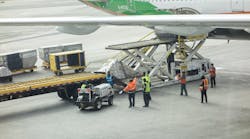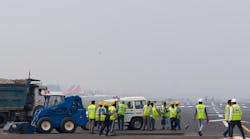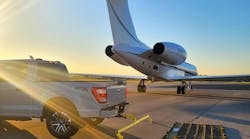Jan. 31--This winter's mild, dry weather has meant few rain- and fog-caused delays at San Francisco International Airport. But air travelers should be prepared for five months of delays this spring and summer, when runway work could cause waits similar to those common during wet or foggy weather.
SFO will close two of its four runways from mid-May through the end of September for Federal Aviation Administration-mandated safety work. While construction crews are installing the airport equivalent of a runaway-truck ramp -- collapsible pavement designed to grab a plane's landing gear and stop it from plowing off the end of the pavement -- SFO will shut its shorter runways, which typically handle departing flights.
Arriving and departing flights will need to share the airport's two longer runways, which have already been extended to meet the FAA requirements. That could mean delays -- even in clear, dry weather -- during SFO's busiest periods. And if rain or fog descends on the airport, even longer delays could ensue.
"During the peak periods of the day, there may be the potential for delays similar to bad- weather delays," said Doug Yakel, an SFO spokesman.
When the skies are clear, and all runways are open, SFO can handle about 60 arrivals per hour, he said. During the busiest part of last summer, it was landing 52 to 54 planes per hour. With two runways closed, the airport will only be able to handle 45 to 46 flights per hour.
The busiest arrival times at SFO are 11 a.m.-noon, 6 p.m.-7 p.m. and 8 p.m.-9 p.m. on weekdays.
The airport expects the biggest impact to be on arriving flights, meaning passengers arriving at the busiest times can anticipate more circle tours of the Bay Area while awaiting their chance to land.
But it will also mean delays for departing flights. Planes leaving SFO will face longer taxis to the runways, which could add 15 minutes in peak times and lead to longer lines waiting for takeoff. To minimize those delays, Yakel said, the Airport Commission recently approved the purchase of software that takes airline schedules and manages the times planes push back from gates, not unlike metering lights.
SFO has been working with airlines to adjust schedules to accommodate the runway work without causing massive delays. While the airlines have been cooperative, he said, Delta Airlines had to cancel plans to increase the number of flights arriving during peak hours. While some other airlines feared that would cause chaos at SFO, Yakel said the FAA has the authority during the runway work to control schedules.
While some travelers may be scratching their heads over SFO's decision to close two runways during the busy summer travel season, Yakel said the airport considered other options but decided shutting down both runways during dry weather would be the quickest way to get the job done.
Michael Cabanatuan is a San Francisco Chronicle staff writer. E-mail: [email protected] Twitter: @ctuan
Copyright 2014 - San Francisco Chronicle


